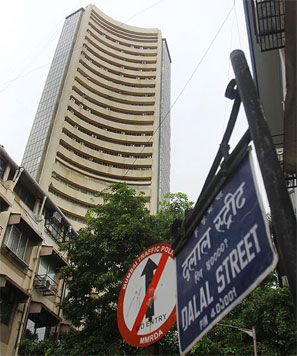On his first day after taking charge, Reserve Bank of India (RBI) Governor Raghuram Rajan had promised two things: One, he would give a ‘detailed explanation’ of his policy stance during the mid-quarter review, slated for this Friday; and two, he would lay out his plan to manage the ‘impossible trinity’ of growth, inflation and currency stability. Going by the mood among observers, an action on the rate front is unlikely to figure in Rajan’s plan for the moment. According to a Business Standard poll of 10 experts, the central bank would maintain the status quo on both policy rate and the cash reserve ratio.
Going by the mood among observers, an action on the rate front is unlikely to figure in Rajan’s plan for the moment. According to a Business Standard poll of 10 experts, the central bank would maintain the status quo on both policy rate and the cash reserve ratio.
The reason: Though the rupee has reversed its trend since Rajan took charge, no one is saying the currency has stabilised. Also, the rate of retail inflation has come down but is still above nine per cent and growth is still limping, despite industrial output snapping its contraction streak of two months.
Another action market participants are waiting to see is whether the liquidity-tightening measures — introduced on July 15 — would be withdrawn.
Only three respondents expect a reduction in the marginal standing facility (MSF) rate, which was raised by 200 basis points to 10.25 per cent. The MSF rate was raised in tandem with capping of the liquidity adjustment facility, to make the rupee’s carrying cost dearer.
However, a reduction in the MSF rate and withdrawing the liquidity-tightening measures are contingent on the US Fed’s decision on tapering of its quantitative easing.
The meeting of the Federal Open Market Committee (FOMC) is scheduled just before the mid-quarter review. RBI had, in fact, postponed its review from Wednesday to Friday to factor in the outcome of the FOMC meet.
The new RBI governor’s primary focus on lower inflation constrains the room for any monetary easing,” says Dhananjay Sinha, head of institutional research, Emkay Global Financial Services.
On Friday, the rupee had ended at 63.50 a dollar, compared with the previous close of 63.54. The marginal strengthening was on account of dollar sale by state-run banks on behalf of RBI.
Since the start of this financial year, the rupee has weakened by almost 17 per cent. Experts say this weakness might deter the central bank from relaxing the liquidity-tightening measures on Friday.
“The tightening was done to stabilise the rupee. And, so far, the rupee has not shown any sign of stabilising. At the FOMC meeting, they are likely to go for unwinding of the quantitative easing.
The markets will react to that and the volatility will increase. It will be too premature for RBI to announce an easing of these measures before the reaction of the market. RBI will take some more time and see how the markets react,” says Alok Singh, chief investment office (fixed income), BOI AXA Mutual Fund.
Since the start of this financial year, the repo rate and the cash reserve ratio have stayed unchanged — at 7.25 per cent and four per cent of net demand and time liabilities, respectively.











